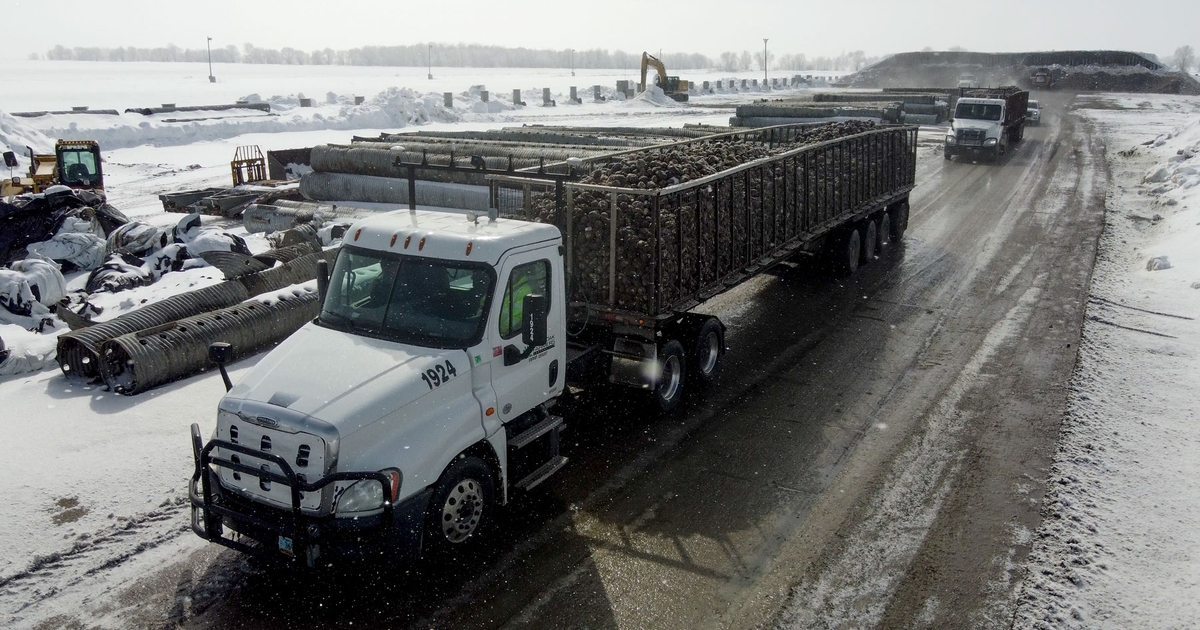
Reliable labor is hard to come by these days. Self-driving technology could alleviate some of the pressure by taking over more menial tasks around the farm, such as operating sprayers and caravanning tractor trailers.
The latter, according to Maynard Factor, vice president of business development for Kratos Defense & Security Solutions’ unmanned systems division, holds a unique opportunity for farmers. Kratos’ self-driving technology is used for military platoon trips, where a few driverless vehicles follow one that’s driven by a person. Now, Kratos is repositioning for the agricultural marketplace.
“Everybody seems to have this same challenge, addressing the driver shortage issue,” Factor says. “We’ve teamed up with Minn-Dak Farmers Cooperative, a granulated sugar manufacturer in North Dakota. There are seven or eight sugarbeet piles we’re running trucks to.”
Sensors mounted on the driverless vehicle direct mechanical levers that are retrofitted to the truck’s existing controls to make it turn, and go faster or slower. A kit installed on the lead vehicle provides data, acting as a forward waypoint.
The driver can adjust settings such as speed and truck spacing, which is typically 300 to 500 feet. Up to three autonomous trucks (per legislation in Minnesota and North Dakota) can travel together at highway speeds but must be manually turned around when they reach their destination. Factor says the technology works well for regular transport routes like driving product to a local grain elevator.
Long-term focus
Modern self-driving vehicles use technology such as lidar, radar and stereo cameras to stay on the road and avoid hazards. Machine manufacturers envision a future where autonomy comes standard. Kendal Quandahl, precision field team manager for Case IH, highlighted this as a long-term focus for the brand.
“When we look at the evolution of precision tech — from 20-years-ago guidance — to what we could see in the next five, 10, 15 years, it’s building through the path of automation to autonomy,” she says. “We want to make more of the machine do more of the job in a way that’s repeatable, efficient and really better than what we as humans.”
Brad Rosen, co-founder of Nodar, which designs stereo camera self-driving kits, says farm machines are particularly suited for driverless technology because they move at slow speeds. Rosen highlighted “sloth follow” activities, like driving a grain cart.
“As long as a piece of machinery has a control system that can be controlled autonomously — that is, the accelerator, the steering and the braking — it could be retrofitted,” Rosen says. “All you need is headlights.”
While some brands design their systems around lidar or radar, Rosen says Nodar uses stereo cameras because they have a long sight range and they’re less expensive than lidar. However, their effectiveness can be hindered by visual obstructions like debris. Nodar’s twin-camera system can calculate up to 50 frames per second, analyzing depth and adjusting the vehicle’s controls accordingly.
Automated spraying
Specialty crop spraying is another repetitive task that could benefit from driverless technology. Sean Sunberg, who leads business integration for high-value crops for John Deere, expands on this opportunity. While there’s potential, vineyards and groves are difficult to navigate due to numerous obstructions.
“You have areas that are fairly remote. You are working in a canopy environment. Oftentimes, you don’t have good cell signal, and reduced or denied GPS,” Sunberg says about GUSS, an electric global unmanned spray system collaboratively launched by John Deere and GUSS Automation.
The machine uses lidar and GPS to detect its surroundings. Before entering the field, operators set GPS boundaries and create maps. Then, using telemetry and built-in sensors, the vehicle navigates on its own.
“Lidar is scanning at all times. It identifies obstacles. It’s basically looking out 30 feet in front of the machine. It knows, based on the algorithm we’ve built into it, what a tree trunk looks like,” Sunberg says.
The technology lets farmers do more with less. “One person can supervise up to eight machines at a time. You’ll be busy, for sure, but you can do it,” Sunberg says. “You will have someone bringing chemical [to refill the machines] when needed. That’s really the premise of GUSS. You want almost constant uptime. You want to be running and spraying for 45 minutes to an hour.”




















